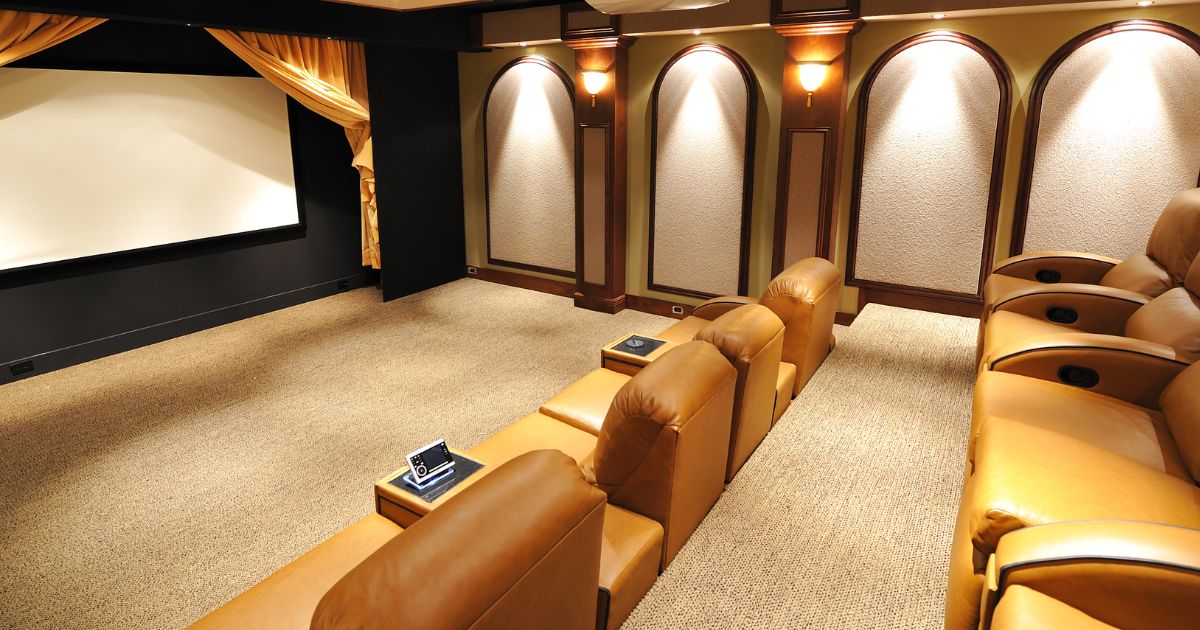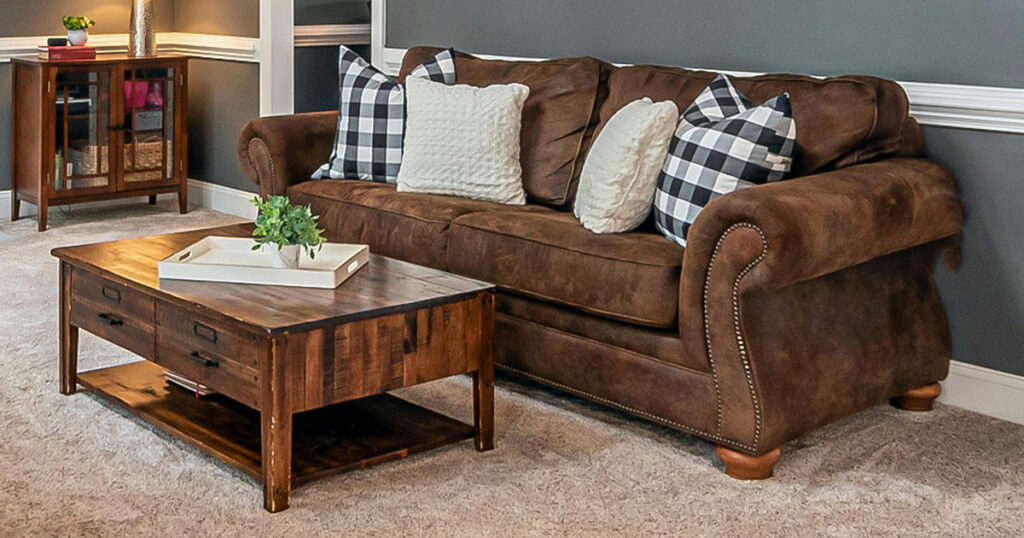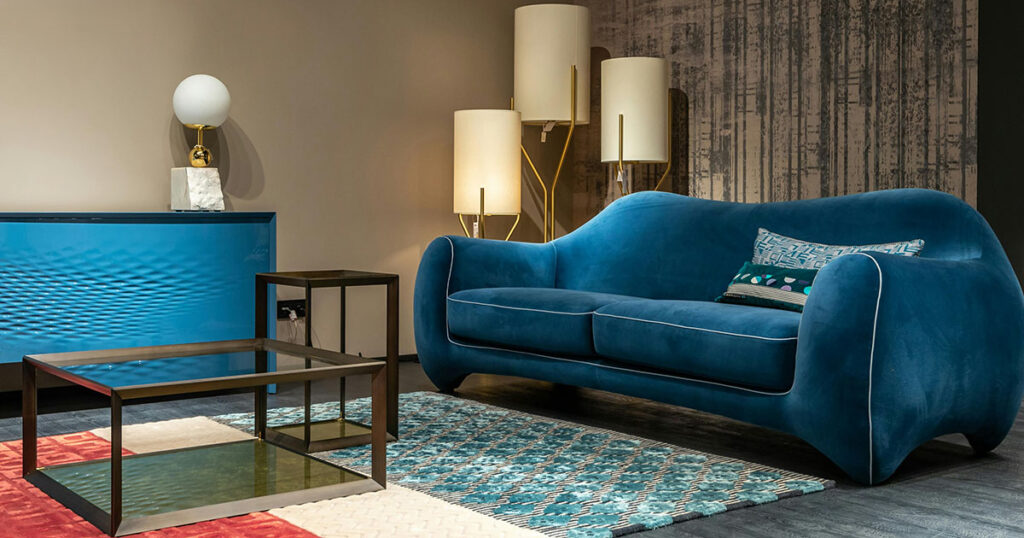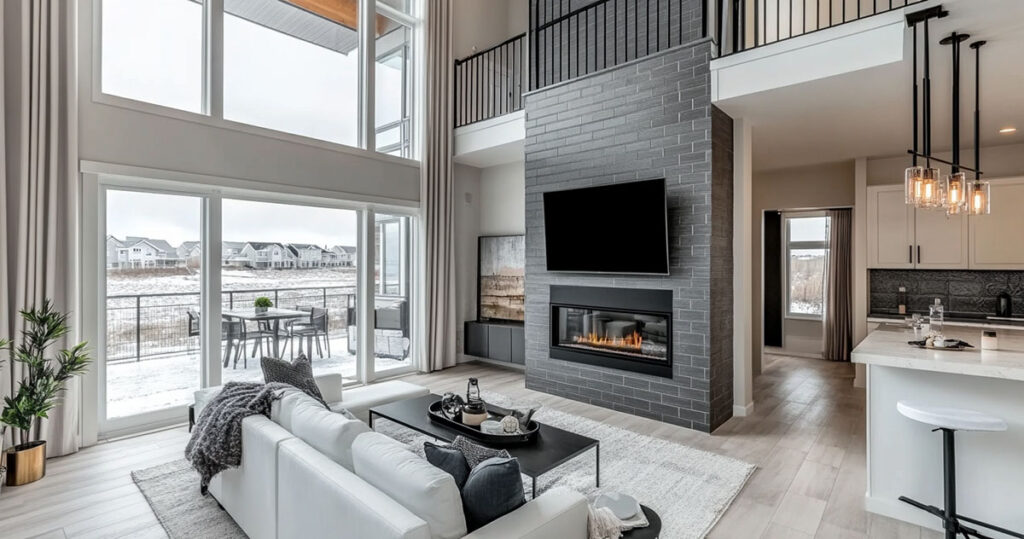When designing a commercial theater, carpet choice affects more than just how the space looks.
The right carpet creates an immersive environment, enhances acoustics, and withstands heavy foot traffic.
Whether you’re building a new cinema or renovating an existing performance venue, your carpet selection impacts both atmosphere and operating costs.
Creating the Perfect Atmosphere
Theater carpets set the mood from the moment patrons enter. Dark, rich colors like deep reds, burgundy, navy blue, and charcoal are popular choices for good reasons:
- They minimize light reflection during performances
- They hide inevitable food and drink stains
- They create a luxurious, sophisticated ambiance
- They complement theatrical lighting and dimmed cinema lights
Patterns aren’t just decorative—they serve a practical purpose by breaking up visible wear and concealing dirt between cleanings.
Consider how your carpet pattern and color will match your venue’s overall theme.
A historic theater might benefit from an ornate pattern to match vintage decor, while a modern art-house cinema might look better with subtle, monochromatic tones.
Sound Enhancement Benefits
Tufted carpets significantly improve theater acoustics by absorbing sound waves. This dampens reverberation and echoes, resulting in clearer dialogue and music. The audience enjoys a more immersive experience as the carpet reduces distracting ambient noise and footsteps.
For optimal acoustic performance, consider:
- Thicker carpets with higher-density fiber piles
- Installing carpets with underlay for enhanced sound absorption
- Carpeting aisles, entryways, and lobby areas to prevent sound from carrying
Practical Considerations
Durability for High-Traffic Areas
Commercial theaters see constant foot traffic, often with food and drinks. Your carpet must withstand this punishment day after day, year after year. Look for:
Wear Resistance Factors
Tufted commercial carpets are designed for durability, but specifications matter. Check the face weight (fiber density), tuft density, and fiber type. High-density, tightly tufted carpets with resilient fibers resist crushing and matting even under heavy foot traffic.
Nylon (polyamide) fiber stands out for commercial settings due to its excellent wear resistance and bounce-back resilience. Solution-dyed nylon is particularly valuable in theaters since it resists fading and stains. While polypropylene and polyester are alternatives with good stain resistance, they may not last as long under heavy traffic.
Maintenance and Cleanability
Easy maintenance saves time and money. For commercial theaters, choose carpets with:
- Stain-resistant treatments
- Multi-colored patterns that camouflage dirt
- Low-pile construction for easier vacuuming
- Materials that respond well to professional cleaning
Establish a regular cleaning schedule from day one—vacuum after each show or daily at minimum, and schedule professional deep cleaning monthly or quarterly depending on usage.
Cost Factors
When budgeting for theater carpet, think beyond the initial price tag. Consider the total cost of ownership over the carpet’s lifespan.
Initial Investment
Higher-quality commercial carpets have a higher upfront cost but can withstand years of use in a busy theater. When calculating costs, include:
- Material costs
- Installation labor
- Floor preparation
- Attic stock (surplus carpet for future repairs)
- Removal of old flooring (if applicable)
Lifecycle Cost & Longevity
A well-chosen commercial theater carpet typically lasts 5-15 years, depending on quality and maintenance. Higher-quality carpets might cost more initially but offer better value by lasting longer and maintaining their appearance.
Most theaters plan to replace carpets every 7-10 years. Areas with different traffic levels may wear differently—lobby carpets often need replacement before auditorium carpets.
Maintenance Costs
Factor in ongoing maintenance expenses:
- Routine cleaning supplies
- Commercial vacuum equipment
- Periodic professional cleaning services
- Potential stain treatments
Regular maintenance extends carpet life and delays replacement—effectively saving money long-term.
Compare manufacturer maintenance recommendations, as some carpets require gentler cleaning methods than others.
Installation and Safety Considerations
While aesthetics and cost are primary concerns, installation and safety can’t be overlooked.
Professional Installation
Always use professional installation for theater carpets.
The carpet should be tightly stretched or securely glued down to avoid wrinkles or shifting that could cause trips. Installation methods vary based on carpet type:
- Broadloom (tufted rolls) requires skilled labor to seam pieces together
- Carpet tiles can be installed faster with less waste, particularly in rooms with complex layouts
- Direct glue-down installation is common for commercial tufted carpets
Fire Safety Requirements
Commercial theaters must meet strict fire safety codes. Your carpet needs to be officially rated for commercial spaces with appropriate fire certifications for your region.
Never install a residential-grade carpet in a public theater—it could pose a serious fire hazard.
Check with local authorities for specific requirements in your area.
Making Your Selection: Next Steps
Selecting the perfect theater carpet balances aesthetics, durability, acoustics, and budget considerations. As you narrow down your choices:
- Request samples to view under your actual lighting conditions
- Ask about manufacturer warranties against excessive wear
- Discuss maintenance requirements with suppliers
- Consider the full lifecycle from purchase to eventual replacement
- Verify fire safety certifications and code compliance
Custom Options
One advantage of tufted carpets is customization potential.
Manufacturers can produce custom patterns or even incorporate logos and branding elements.
Custom designs can reinforce your theater’s unique identity while maintaining practicality.
Need Carpets for Your Theater?
Our team specializes in providing high-quality custom tufted rugs for commercial theaters.
With over 20 years of industry experience, we understand the unique requirements of performance spaces.
Contact us today to discuss your theater carpet needs.




